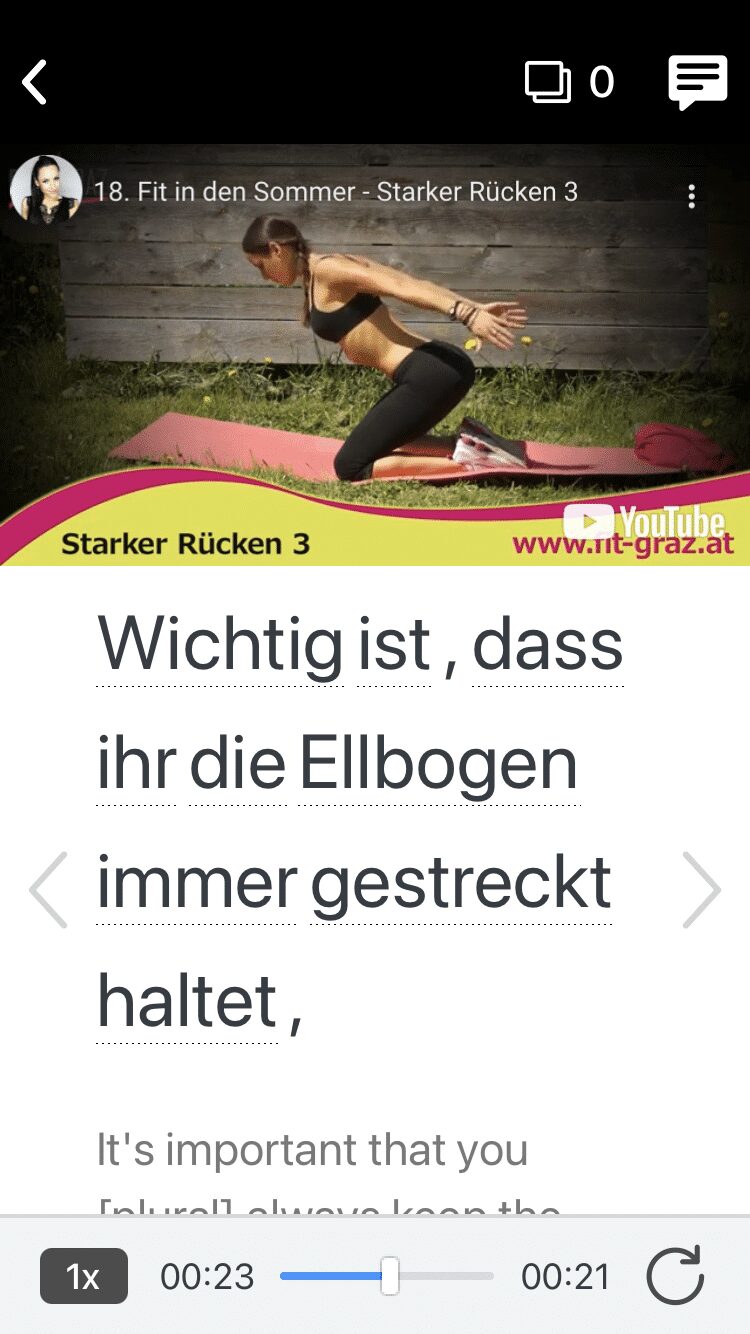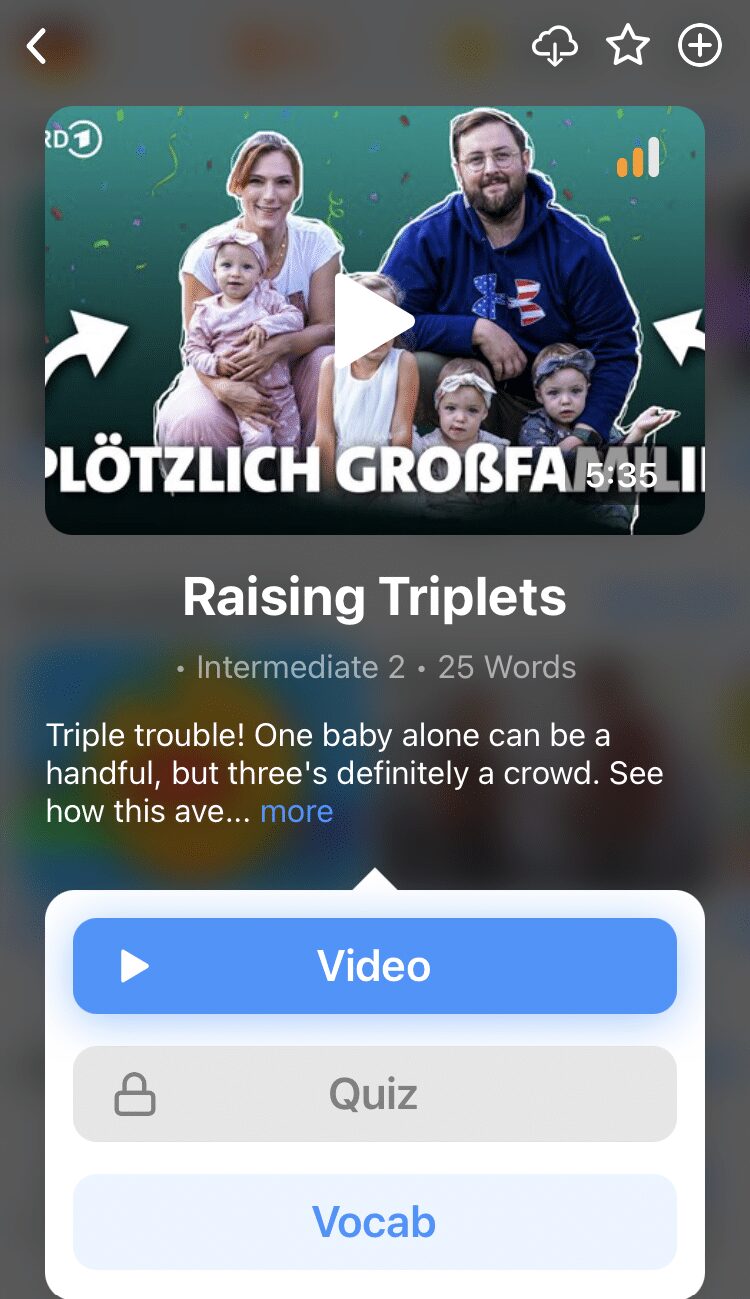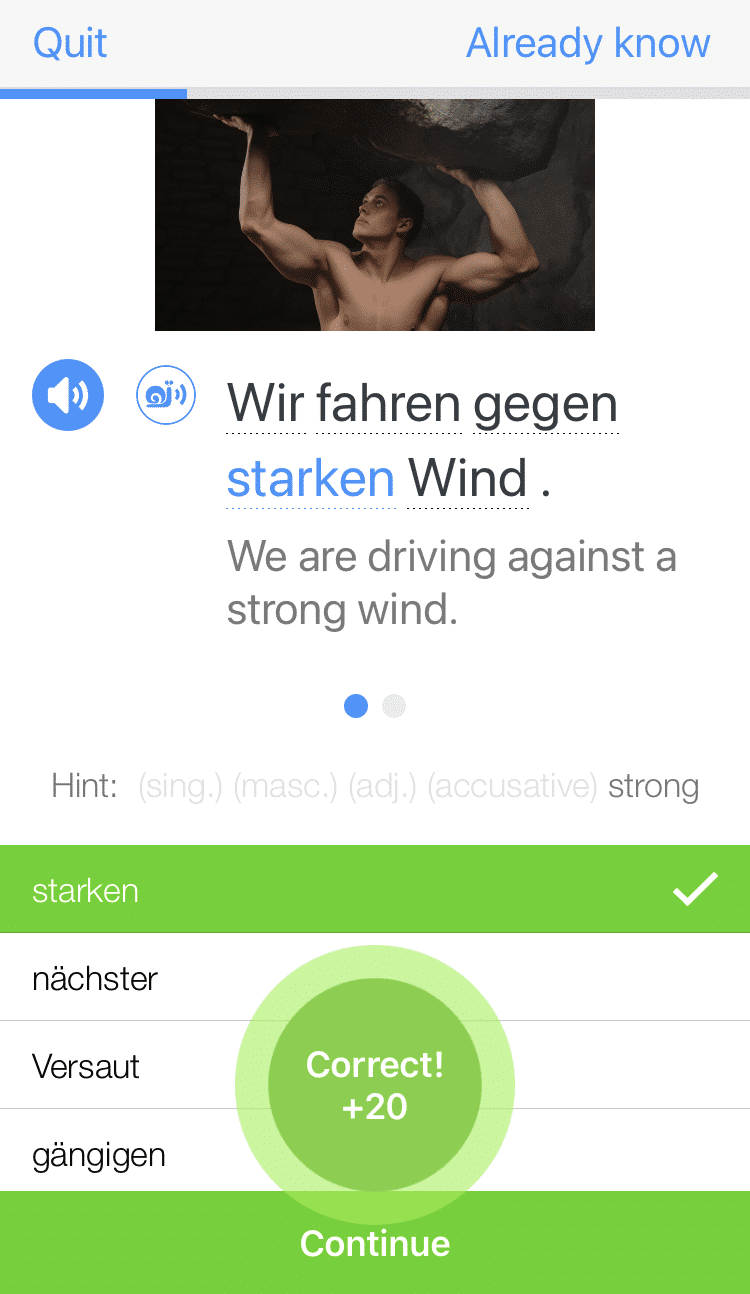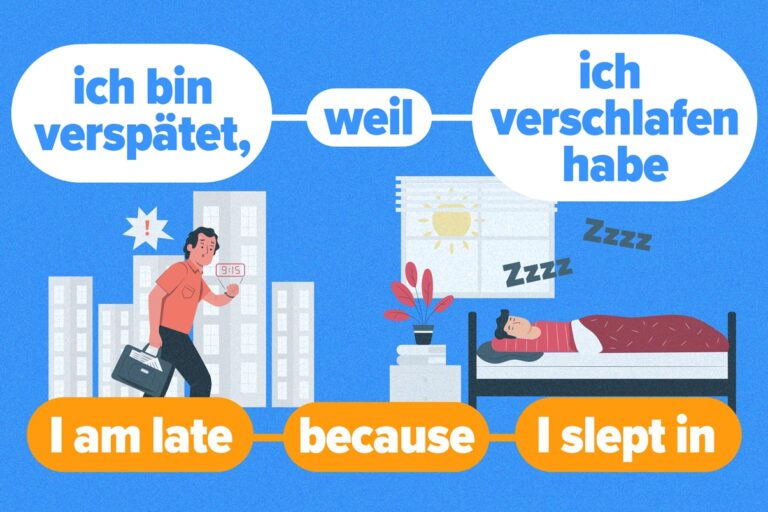German Reflexive Verbs: Types, Conjugation and Grammar Essentials

In German, you talk about yourself—or reference other selves—by using reflexive verbs, with the help of a reflexive pronoun.
You’ve probably come across German reflexive verbs quite often in your studies, as some of them are commonplace, helping describe some daily tasks we complete and express the proper sentiment.
Reflexive verbs and their corresponding pronouns build upon the knowledge base you’ve hopefully already established when it comes to the accusative and dative cases. So let’s get right into it.
Download: This blog post is available as a convenient and portable PDF that you can take anywhere. Click here to get a copy. (Download)
The Basics of German Reflexive Verbs
In English, verbs are only reflexive when they’re paired with a reflexive pronoun such as themselves and ourselves. For example: “The dog licks himself.”
In German, it’s much easier to recognize reflexive verbs.
This infinitive form of the verb will be accompanied by a reflexive pronoun, typically written as sich . A common German reflexive verb is sich waschen , which means “to wash oneself.”
German reflexive verbs can be accusative and/or dative, depending on the context of the sentence. It’s important to know the case of the verb so that you can choose the correct reflexive pronoun, which, of course, refers back to the subject of the sentence.
How to Determine the Correct Reflexive Pronoun
In German, reflexive pronouns reflect the case of the reflexive verb. Some reflexive verbs have a determined case, while others can change between accusative and dative, depending on what’s going on in the sentence.
We’ll touch more on that in a second—first, here’s a list of the accusative and dative reflexive pronouns you’ll use:
| English | Accusative | Dative |
|---|---|---|
| myself | mich | mir |
| yourself (informal) | dich | dir |
| himself/herself/itself | sich | sich |
| ourselves | uns | uns |
| yourselves | euch | euch |
| themselves | sich | sich |
| yourself (formal) | Sich | Sich |
The only difference between the two sets of reflexive pronouns lies in the “myself” and “yourself (informal)” forms. Mich changes to mir and dich changes to dir. The rest stays the same.
That being said, don’t confuse these reflexive pronouns with accusative and dative personal pronouns, which aren’t reflexive.
How to Conjugate German Reflexive Verbs
Like any other German verb, reflexive verbs have an infinitive form, which is conjugated to the subject. However, though the conjugated verb takes the second position, as is normal, the reflexive pronoun follows directly after. Let’s take a look at some examples.
Accusative Reflexive Verbs and Pronouns
The verb sich duschen means “to shower.” It’s an accusative reflexive verb.
If we wanted to say, “I showered yesterday,” we’d use ich and the corresponding accusative form of the “myself” reflexive pronoun (mich) to complete the sentence. After conjugating duschen to the ich form, say in simple past, we’d have:
Ich duschte mich gestern. (I showered yesterday.)
But let’s say you wanted to tell someone, “They showered yesterday,” so that they need to shower again today. We can use the same sentence structure, but just replace the subject and reflexive pronoun, and conjugate the verb duschen to the “they” plural form:
Sie duschten sich gestern. (They showered yesterday.)
Dative Reflexive Verbs and Pronouns
In the dative case, the formula is similar. We need the dative forms of the reflexive pronoun, rather than the accusative forms.
Let’s use sich etwas brechen , or “to break something,” as an example since it’s dative.
Ich brach mir das Bein heute Morgen. (I broke my leg this morning.)
Again, we use the simple past tense of brechen, conjugated to the ich form, and place the dative reflexive pronoun (mir) directly after the reflexive verb.
Notice, however, that we didn’t use mein Bein. This is because the reflexive pronoun mir indicates whose leg was broken. Directly translated, the German sentence above reads, “I broke myself the leg today morning.”
It’s a bit like a sentence map, where the speaker points back at themselves and to the specific body part to let the audience know what the action is referring to.
It can be a bit tricky to get used to first, but you’ll get it with practice. To see how native speakers use these reflexive verbs in context, check out FluentU.
FluentU takes authentic videos—like music videos, movie trailers, news and inspiring talks—and turns them into personalized language learning lessons.
You can try FluentU for free for 2 weeks. Check out the website or download the iOS app or Android app.
P.S. Click here to take advantage of our current sale! (Expires at the end of this month.)
Remember not to use a possessive pronoun when indicating a direct object with German dative reflexive verbs!
Two-way German Reflexive Verbs
Some German reflexive verbs can actually take both the accusative and dative cases.
One example of this is our old friend, sich waschen, meaning “to wash oneself.”
Check if there’s an indirect object—this means that the reflexive verb is being used in the dative case. When no indirect object is present, the reflexive verb is accusative.
Ich wasche mich. (I wash myself.)
Ich wasche mir die Händel. (I wash my hands.)
The first sentence uses the accusative reflexive pronoun mich because there is no indirect object present. The ich, or “I,” is doing the washing to mich or “myself,” but there’s nothing else receiving the action.
However, in the second sentence, die Hände or “the hands” are the direct object, while “myself” or mir is the indirect object.
This one is hard to translate fully into English. The sentence “I wash my hands” takes “my hands” as the direct object, but in German, we have to include the self-referencing mir, which shows whose hands are being washed. Since “the hands” are already the direct object, mir must take the dative case.
Separable Prefix Reflexive Verbs
Separable prefix reflexive verbs behave just as typical separable prefix verbs, except that the reflexive pronoun follows the conjugated part of the verb—and then the prefix.
For example, take a look at this sentence using sich hinlegen , which means “to lie down.” It’s an accusative separable prefix reflexive verb.
Ich lege mich hin. (I lie down.)
Though the sentence technically translates to “I lie myself down,” we don’t often include the “myself” part when speaking in English. We just say that we’re going to lie down and leave it at that.
The verb “to imagine something,” or sich etwas vorstellen , works in a similar way, though it’s a dative separable prefix reflexive verb:
Sarah stellte sich ein Einhorn vor. (Sarah imagined a unicorn.)
If you’d like to add a few German reflexive verbs to your vocabulary studies, check out this list of common reflexive verbs. Remember to include the case in your memorization practice.
Where to Find Practice Resources
Check out these online resources for further instruction and practice exercises:
- Read Nancy Thuleen’s handout on German reflexive verbs and how they compare in English. For more examples of proper word order, see the bottom of her handout.
- Practice daily with Quizlet flashcards or a conjugation app to further reinforce this lesson on German reflexive verbs. The more reflexive verbs you know, the better a speaker you’ll be.
- Translate sentences using various reflexive verbs from English to German and vice versa.
- Access Routledge Textbooks’ interactive quizzes to test your understanding of this complicated subject. There are numerous exercises to choose from.
Taking about yourself out loud or in your head in German should be a bit easier now that you know about the German reflexive verbs. Learning is all about exploring the world around you—and the one within you.
Download: This blog post is available as a convenient and portable PDF that you can take anywhere. Click here to get a copy. (Download)
And One More Thing...
Want to know the key to learning German effectively?
It's using the right content and tools, like FluentU has to offer! Browse hundreds of videos, take endless quizzes and master the German language faster than you've ever imagine!
Watching a fun video, but having trouble understanding it? FluentU brings native videos within reach with interactive subtitles.
You can tap on any word to look it up instantly. Every definition has examples that have been written to help you understand how the word is used. If you see an interesting word you don't know, you can add it to a vocabulary list.
And FluentU isn't just for watching videos. It's a complete platform for learning. It's designed to effectively teach you all the vocabulary from any video. Swipe left or right to see more examples of the word you're on.
The best part is that FluentU keeps track of the vocabulary that you're learning, and gives you extra practice with difficult words. It'll even remind you when it’s time to review what you’ve learned.
Start using the FluentU website on your computer or tablet or, better yet, download the FluentU app from the iTunes or Google Play store. Click here to take advantage of our current sale! (Expires at the end of this month.)












